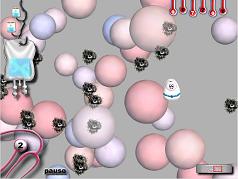I’m too busy to have cancer! With a full-time job, house, social life, dating, cycling and traveling, how do you put it all on pause for an illness? Back in 2007, I was burning the candle at both ends. I felt so tired and achy all of the time, so I stopped exercising because I didn’t have the energy. It seemed to all spiral down after that.
In August 2007, I kept having pains in my chest, but when I went to the doctor, he said maybe I hurt myself at the gym, bruised some cartilage or it might be a strain. He gave me pain pills and told me it might take some time. Nothing abnormal showed up on the x-ray. The doctors were focusing on my bones, though, not my lungs.
Scared, I desperately called an Asian medicine acupuncturist and chiropractor to ask if he could see me right away and tell what was wrong with me. He took a standing x-ray and told me that I needed to see a doctor immediately. The x-ray showed my entire chest wall was clouded white, similar to when I had pneumonia as a kid, except this was a solid, bright white.
This was Friday night and I didn’t know where to go. I ended up at an after-hours clinic. They did a white blood cell test and said it couldn’t be pneumonia, so I was sent to the emergency room. After a CT scan, an ER doctor (with great bedside manner) bluntly said that it looked like cancer and good luck!
I ended up staying in the hospital for two weeks for a series of CT scans, draining two liters of fluid from my left chest cavity (that had shown in the x-ray), chest tube, biopsy, diagnosis, port placement and hefty doses of morphine. Two weeks earlier, I had been running up a hill in San Francisco. Now I couldn’t walk up more than two stairs without starting to faint. On December 22, 2007, my chest tube was removed and I started chemo, the day before my 31st birthday. I spent my birthday vomiting from chemo nausea and lying in bed.
People with Stage 4 adenocarcinoma of the lung usually have smoked for 30 years, worked in a factory or been exposed to certain chemicals. However, I was a 30-year-old non-smoking female, who ate well and exercised. Did I happen to get this mutation of my lung cells due to some sort of damage? Was it pneumonia scarring as a kid, pollution or something I consumed? No one will ever be able to tell me.
Luckily, because I was otherwise so healthy and young, I had a lot of fight and responded well to chemo. I had a few chemo treatments and the main tumor responded, shrinking, leaving a hollow cystic shell, but then chemo stopped working. I wanted to take it to the fullest extent, but it was decided I’d switch to an oral treatment, which saved my life by binding with the receptor of my certain type of cancer cell to block it from multiplying. If I had this disease 10 years ago, I would not have had this option and might not be alive today.
This article is about Lung Cancer, when you read this article you will find many new words, so your vocabulary will increase. to read more about this article just click http://blog.preventcancer.org/2010/lung-cancer-survivors-story-dont-ignore-the-symptoms/ please.
By : Fitri Yunida

